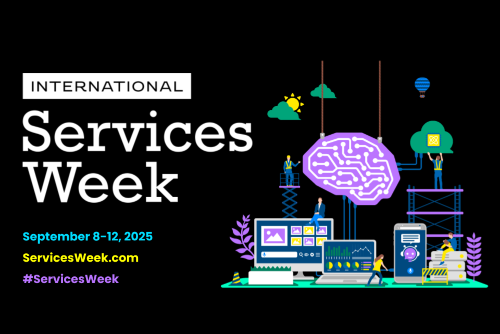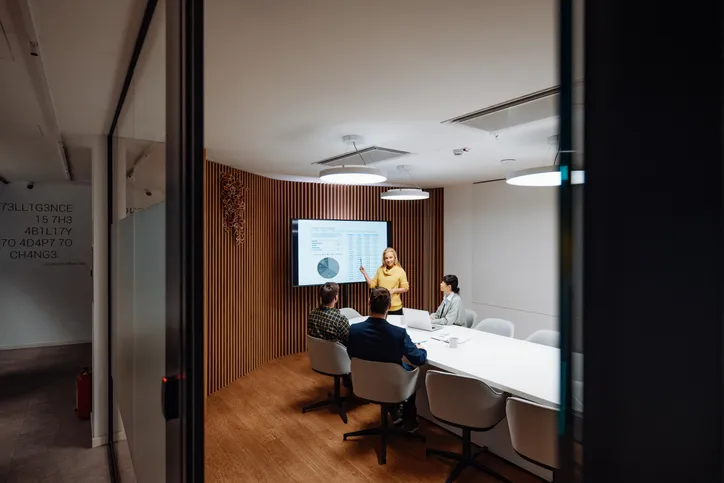Four biggest barriers to becoming a customer-centric business

The reason service businesses need to focus on customer-centricity is no great secret–customers have expectations for the type of experience they want to have with a business, and if they don’t get it, they move on. But while a company may say they offer a memorable customer experience as part of service delivery, what they actually put into practice can look quite different.
With business growth and success so connected to the customer, how can companies overcome the biggest barriers to customer centricity and create ideal customer experiences?
What a customer-centric business looks like in a period of uncertainty
Global volatility has reared its ugly head into every aspect of our lives, and the services economy is no exception.
After multiple years of global supply-chain disruption, inflation and rising interest rates, customers find themselves rethinking what’s important, how they make buying decisions, and who they want to work with. In a recent study, Accenture calls this group “the reimagined customer”–of which 72% say they expect companies they do business with to understand and address how their needs changed since 2020.
These shifts in the consumer mindset mean that companies must now take special notice of how their customers’ behaviors have changed. Previously dominant motivations like price and quality have been overshadowed by other motivations like personalization, health and safety, customer cash flow and payment terms, and even location of service delivery. Granted, for some businesses, meeting these expectations may require cultural or operational changes in addition to a greater focus on customer-centricity, but without a doubt, the more customer information you have, the more impactful you can be.
Whether challenges to your business growth were brought on by global volatility or simply exacerbated by it, you need to fully understand those challenges before you can overcome them with customer-centricity.
Avoiding barriers to customer-centricity out of the gate will increase the success of tactics you do put into place. It will give you greater visibility into what customer processes in your organization are working–and what may need a reboot. This will position you for growth and success as we continue to operate in an environment of global uncertainty.
What are the biggest barriers to becoming a customer-centric business? And how can you fix the issues?
1. Becoming complacent about problematic systems and data processes
Many companies operate using disparate systems and a mix of manual and automated processes that make information hard to find and even harder to share among departments. Often, these companies will adopt new technology, hoping it will help them work more efficiently; however, if your current processes are a mess, a new system won’t provide much benefit. How to fix:
Take stock of your current processes with a specific focus on your customer experience. When customer data is collected, disseminated, and leveraged properly and effectively, the customer experience naturally improves.
- Break down silos among departments to ensure customer information is moving in a streamlined fashion from sales to service to support–and back. Each department should have access to pertinent customer information and be able to make new information readily available.
- Designate owners and users of your technology. With too many cooks in the kitchen, customer data can be lost, duplicitous, or just confusing. Assigned roles help improve your ability to serve your customers effectively.
- Identify changes needed to people and processes. At a high level, this is about changing the culture of the company to be truly centered around the customer and their business outcomes.
2. Failing to adopt new technology
If you’ve addressed the first barrier and have successfully streamlined your data flow among departments and assigned technology roles, you’ve already made an impact on the customer experience. However, the next step is to take the plunge and adopt new technology. Many companies hesitate due to cost concerns, are overwhelmed by onboarding a new solution, or simply the belief that what they have is working fine. We would argue that when it comes to attaining and maintaining happy customers, the more capable your internal processes are, the better.How to fix:
A single-platform solution, such as Certinia’s Services-as-a-Business platform, will take your existing systems and consolidate them into a single source of truth with enterprise-wide visibility. This approach offers countless benefits for your organization and your customers to:
- Provide your team with the right tools so they can focus on their customers.
- Create visibility into how customer processes impact each department, giving employees a common goal.
- Allow data to flow among departments, enabling sales, for example, to follow up with a client based on an update they see from the service department or empowering service to reach out to sales to check on missing customer information.
3. Making operational changes without factoring in customer experience
Whether it’s changing a process, adopting new technology, or raising expectations for sales, any alteration to your organization should include all individuals who will be involved in driving the success of that change. Yet, many organizations shift operations in a vacuum, making it difficult for employees to get on board and live up to expectations. And in this type of environment, the customer experience suffers too.
How to fix:
Have conversations with subject matter experts and customer-facing employees within your business to understand how they work and how they use your existing technology and solutions to interact with customers.
- Work to understand from your employees what is important to the customer so you can ensure any change continues to support customers’ needs–and will enable your team to continue meeting those needs.
- Always reinforce that it takes all departments working in concert to deliver on your customer experience mandate.
- Understand the capabilities and offers you need to deliver the optimal customer experience. For example, perhaps you need additional internal and external-facing communication channels or collaborative tools.
4. Deprioritizing data security
Trust is an incredibly crucial consideration for customers when working with any business. Personal information and data are all-too-frequently put at risk during security breaches that are only growing in sophistication and targeting businesses of all sizes across all industries. Failing to implement strong data privacy and security protocols can be a major factor in a customer’s decision to do business with you; let alone if a breach succeeds in compromising customer data.
How to fix:
- Implement security protocols that are specific to your business and industry, and ensure you meet all compliance regulations for your industry as well.
- Understand the security protocols you need to protect the type of data you’re collecting from your customers and how you’re collecting it.
- Make your commitment to security and data privacy well-known to your customers on your website and as part of any transaction or information collection.
- Benefit from the extensive security features of the Salesforce platform when you work with Certinia. Salesforce has made massive investments into its security, ensuring the most up-to-date capabilities for event monitoring, authentication, encryption, and more.
Putting the “customer” in “customer-centricity”
Thus far, we’ve discussed barriers to customer-centric operations that are largely internal. And it is critical to streamline your inter-departmental processes, adopt a single-platform solution to create greater enterprise visibility, and empower your team to turn their institutional knowledge into customer-forward solutions.
But all of these elements are still inside your organization.
It’s time to move outside your company walls to the customers themselves. To be a truly customer-centric organization, you must do the internal work, but it goes beyond that.
- Be empathetic. Take what you know about your customers’ needs and find ways to respond to them. A customer-centric act of empathy could be a customer success manager or professional services leader delivering a weekly project status update during times of volatility to ease customer fears about their investment in your service offering and demonstrate your transparency, knowledge, and commitment to what matters most to them.
- Use information for good. Everyone who uses the internet knows they are being asked for their personal data for marketing intel purposes. But when companies use that data in ways that demonstrate thoughtful, predictive, proactive customer-centric engagement as opposed to unhelpful or spam-quality outreach, greater loyalty and respect are created.
- Be more than personalized. Truly customer-centric organizations are combining a personalized experience with a connected experience. Demonstrating to your customers that you understand their unique business needs is wonderful, but a sloppy handoff between departments that undermines your services delivery essentially cancels out any level of personalization.
- Don’t focus on the sale. Putting the “customer” in “customer-centricity” means shifting the way your business thinks about a successful transaction. Instead of focusing on whether you got the business, or how large the sale was, you should be focused on whether the customer’s needs were met, customer value was achieved, and if they had a good experience.
Chances are, your business is already focused on customer-centricity. But the disruptions from global volatility, changes in the traditional buyer journey, and the fast pace of day-to-day operations are all good reasons to revisit how you put the customer at the center of your business.
Leveraging a single-platform approach like that from Certinia is a great way to start. Contact us to schedule a demo and learn more about how you can leverage Certinia on the Salesforce cloud platform to streamline your operations and put your customers at the center of everything you do.
Recent Articles
Maximize your Salesforce investment with Certinia






